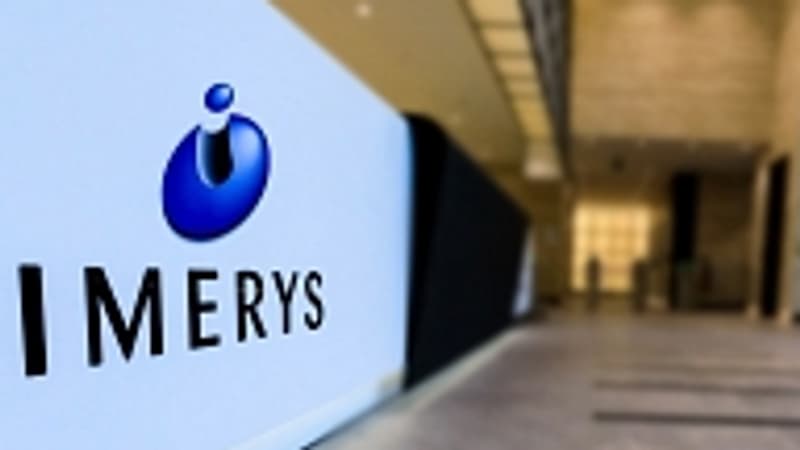In terms of lithium extraction, France must not “prohibit anything”. Ten months after the statements of the former Minister of Ecological Transition, Barbara Pompili, the French industrial minerals group Imerys announced on Monday the start of exploitation by 2027 of a lithium deposit in the Allier. This site, “one of the largest” in Europe, should be able to supply the equivalent of 700,000 electric vehicles per year.
The Imerys project, supported by the Government, was selected within a call for projects launched by the executive last January when the France 2030 plan provides for 1,000 million euros of public investment to develop the tricolor industry in the so-called “critical” metals. (lithium, nickel, cobalt, tantalum, copper nickel, etc.)
If the government has decided to adopt a strategy in this matter, it is because these metals used in the production of batteries for electric vehicles, computers or other technological products are particularly coveted these days. By 2060, world demand should increase from 8 to 20 billion tons. This complicates the supply of the European Union, which today imports 70 to 100% of the metals it consumes. Hence the importance of developing a complete and independent industrial sector.
Five selected projects
It is in this logic that the government announced this Monday the companies selected as part of its call for “Critical Metals” projects aimed at developing the “production of lithium and the recycling of critical metals contained in lithium-ion batteries (nickel, cobalt, lithium)”.
In addition to the Imerys extraction site, the CoRaLi project in Viridian (Bas-Rhin) provides for the development of France’s first lithium refinery. “Thanks to the French energy mix, battery-grade lithium will be produced with the lowest carbon content in the world. The demand to produce 2 million electric vehicles per year,” says the Government.
For its part, Eramet was chosen to bring to light a “large-scale French offer for the recycling of lithium-ion batteries, with a first industrial phase starting in 2025.” Lastly, the Sanou Koura project in the Ardennes should create the first factory capable of recovering all the metals contained in electronic waste, while the WEEECycling project in Seine-Maritime will allow it to multiply its metal production tenfold. waste there again.
Ultimately, these five projects subsidized with 94 million euros “will make it possible to ensure a low-carbon supply chain with a low environmental footprint for the first three battery gigafactories planned on French territory,” the government stresses. Other winners should be announced in the coming months, while the call for “Critical Metals” projects is open until January 30, 2024.
Identify deposits
A sign of the government’s desire to accelerate the issue of rare metals, a decree published on Saturday in the Official Gazette granted exclusive permission to the Compagnie des Mines Arédiennes to allow it to search for mines of rare metals, that is gold, silver, tungsten, tin , zinc, lead or even cobalt.
To date, France exploits, among other things, mines of rock salt, particularly in the Grand Est, bauxite (Hérault), kaolin (Massif Central), gold (Guyana) or even nickel (New Caledonia). But the government, aware of the undeniable geological riches of the territory, wants to go further. In this sense, the Geological and Mining Research Office (BRGM) is currently working on updating its “National Mining Inventory” to assess France’s potential, the last one carried out during the period 1975-1992, taking into account issues that are no longer are today’s.
According to The crossBRGM’s work began this summer “with an aerial geophysical campaign in the west of the Massif Central, to provide a 3D visualization of the subsurface up to several hundred meters, or even a kilometer”.
In fact, the Massif Central would be among the richest regions in strategic materials. The site of Beauvoir (Allier), owned by Imerys since 2005, has been home to a quarry since 1850 that produces some 30,000 tons of kaolin each year, used in porcelain or tiles. Since the 1960s, the Bureau of Geological and Mining Research (BRGM) has identified the presence of lithium in the subsoil of this site, but Imerys has so far remained extremely cautious about the possibility of exploiting it, claiming until last spring that he did not I had confirmation. of the lithium content or the methods to be used to extract it profitably.
“We must end the myth of the clean mine”
There remains the question of the environmental impact of these new mining projects. Imerys announced for its part that the mine would adopt a developing international standard, IRMA, which aims to reduce toxic discharges and minimize water consumption. Mining will take place underground, which will minimize dust. The rocks will be transported by pipeline and rail to avoid trucks between the mine and the industrial site. Regarding the emissions generated by the operation, the group estimates them at 8 kilos of C02 per ton of lithium, against 16 to 20 kilos in Australia and China, according to him.
“We have to put an end to the myth of the clean mine! All that is communication and flan. We don’t know how to extract material from the subsoil in a clean way, because a mine always involves a large chemical processing plant, which leads to exploitation and, ultimately, to the contamination of water and large amounts of waste that we don’t know how to do. manage,” protested Antoine Gatet, vice president of France Nature Environment (FNE).
The government’s plan also faces local reluctance. Last February, the only statements by Barbara Pompili according to which France should “extract lithium on its territory” were enough for the inhabitants of Tréguennec to take to the streets to shout their opposition to any extraction project on their territory. And for good reason, this small town in Finistère would be home to one of the largest lithium deposits in France at 66,000 tons. Something to arouse the lust.
Source: BFM TV


